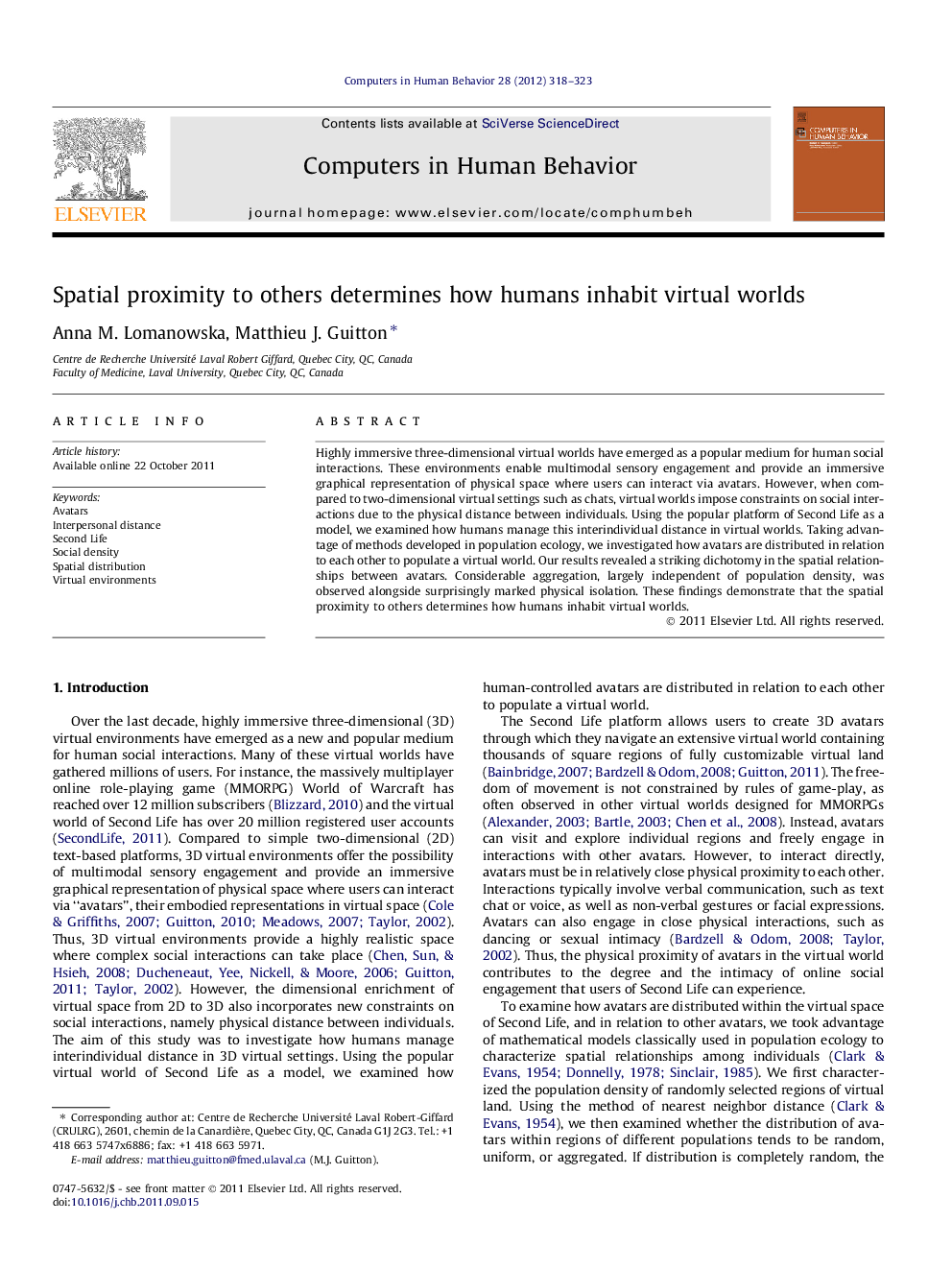| کد مقاله | کد نشریه | سال انتشار | مقاله انگلیسی | نسخه تمام متن |
|---|---|---|---|---|
| 351617 | 618474 | 2012 | 6 صفحه PDF | دانلود رایگان |

Highly immersive three-dimensional virtual worlds have emerged as a popular medium for human social interactions. These environments enable multimodal sensory engagement and provide an immersive graphical representation of physical space where users can interact via avatars. However, when compared to two-dimensional virtual settings such as chats, virtual worlds impose constraints on social interactions due to the physical distance between individuals. Using the popular platform of Second Life as a model, we examined how humans manage this interindividual distance in virtual worlds. Taking advantage of methods developed in population ecology, we investigated how avatars are distributed in relation to each other to populate a virtual world. Our results revealed a striking dichotomy in the spatial relationships between avatars. Considerable aggregation, largely independent of population density, was observed alongside surprisingly marked physical isolation. These findings demonstrate that the spatial proximity to others determines how humans inhabit virtual worlds.
► Distance between avatars in immersive virtual worlds constrains their interactions.
► Humans actively regulate interindividual distance when immersed in virtual worlds.
► Most human-controlled avatars are physically aggregated with others.
► However, a marked proportion of avatars are more isolated than expected.
► The spatial proximity to others shapes how humans occupy virtual worlds.
Journal: Computers in Human Behavior - Volume 28, Issue 2, March 2012, Pages 318–323